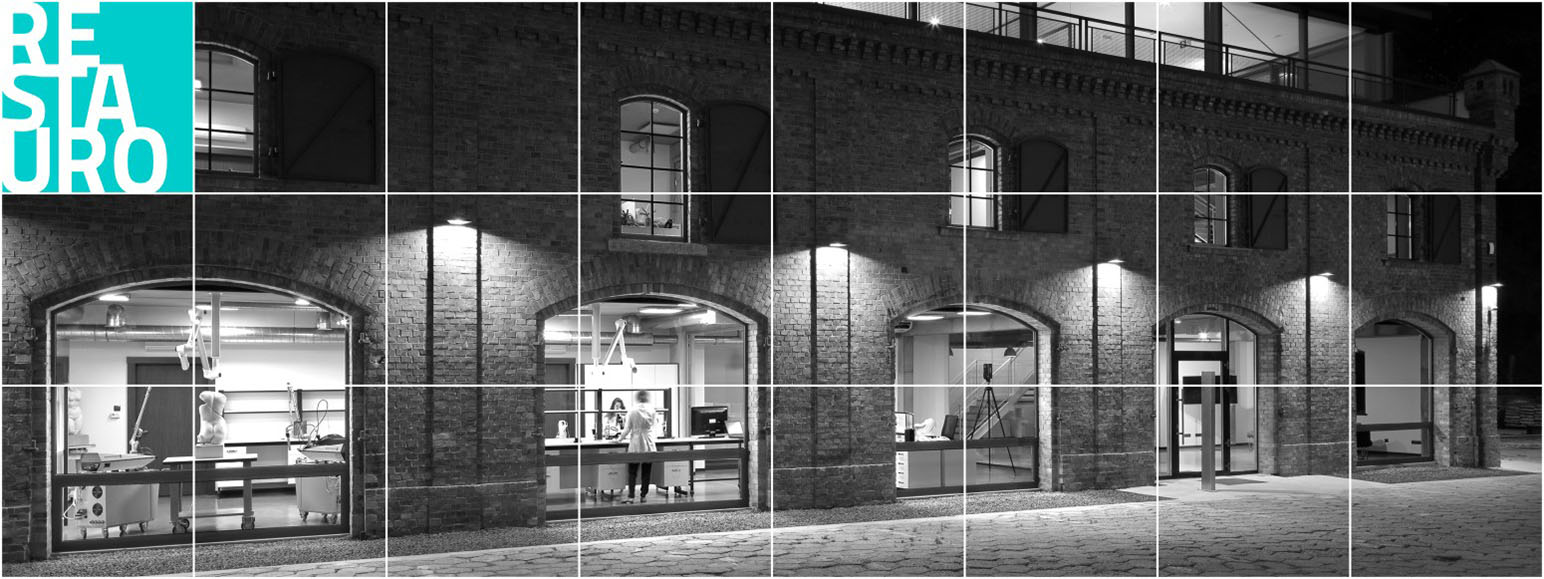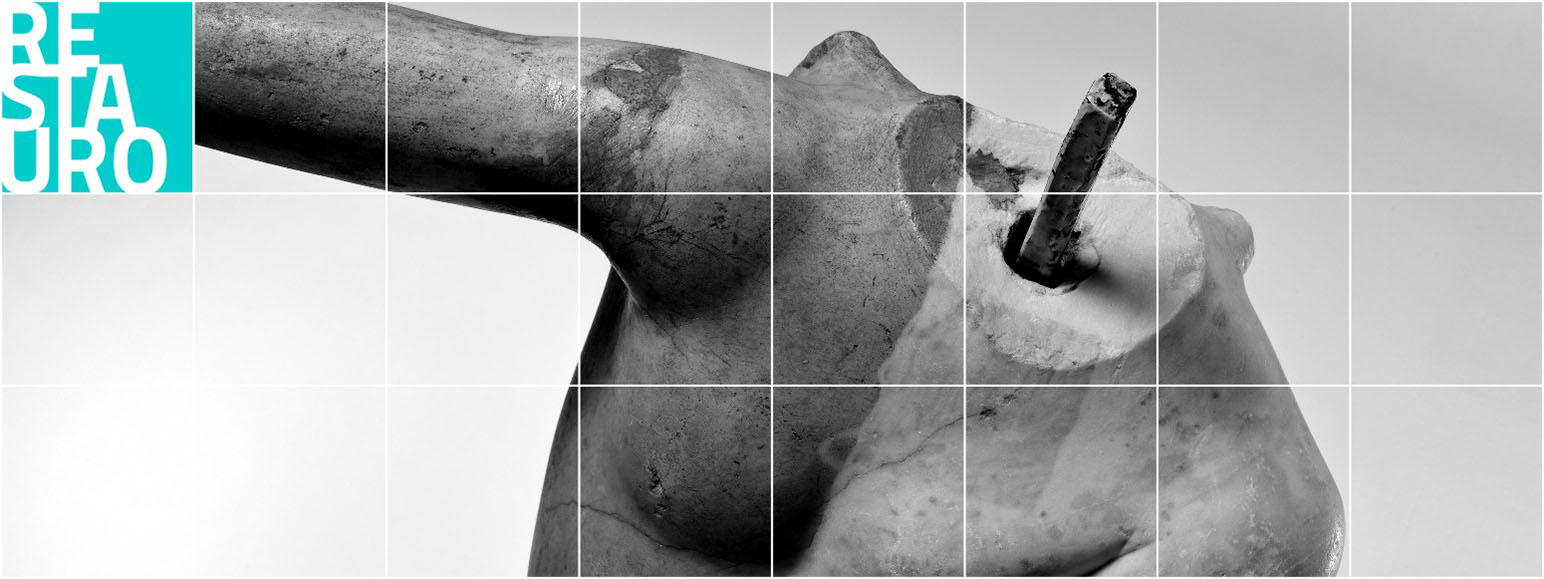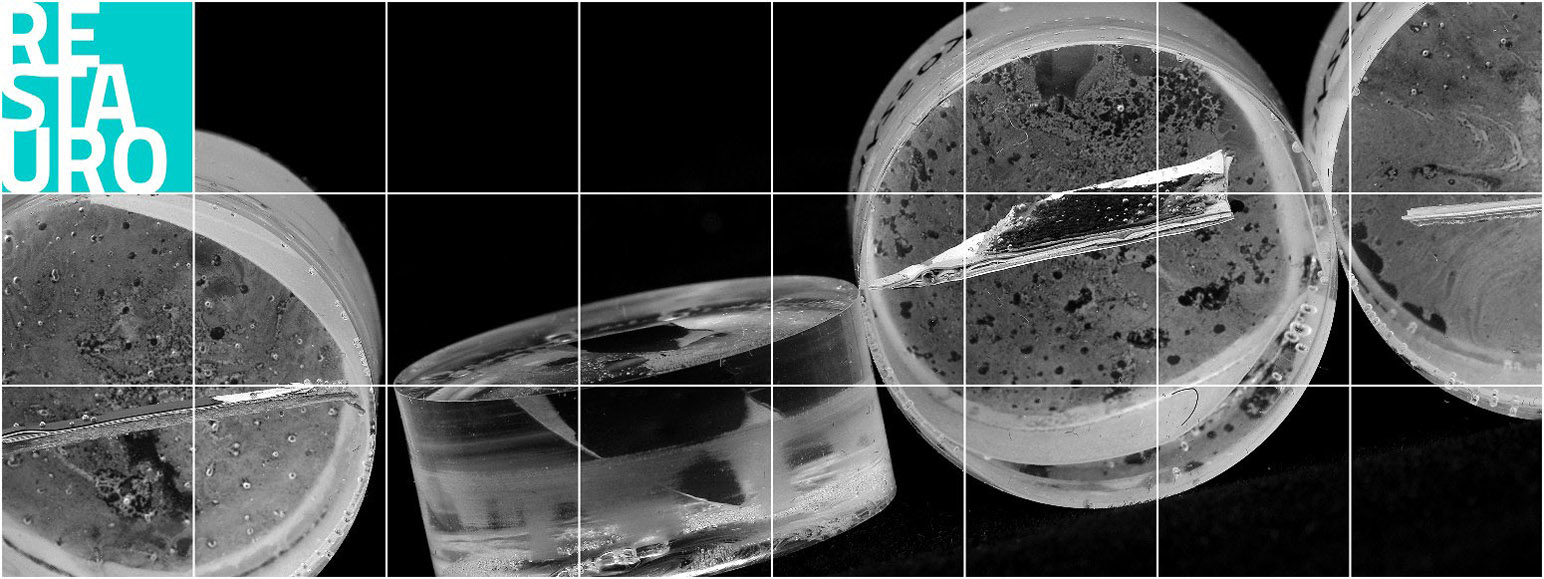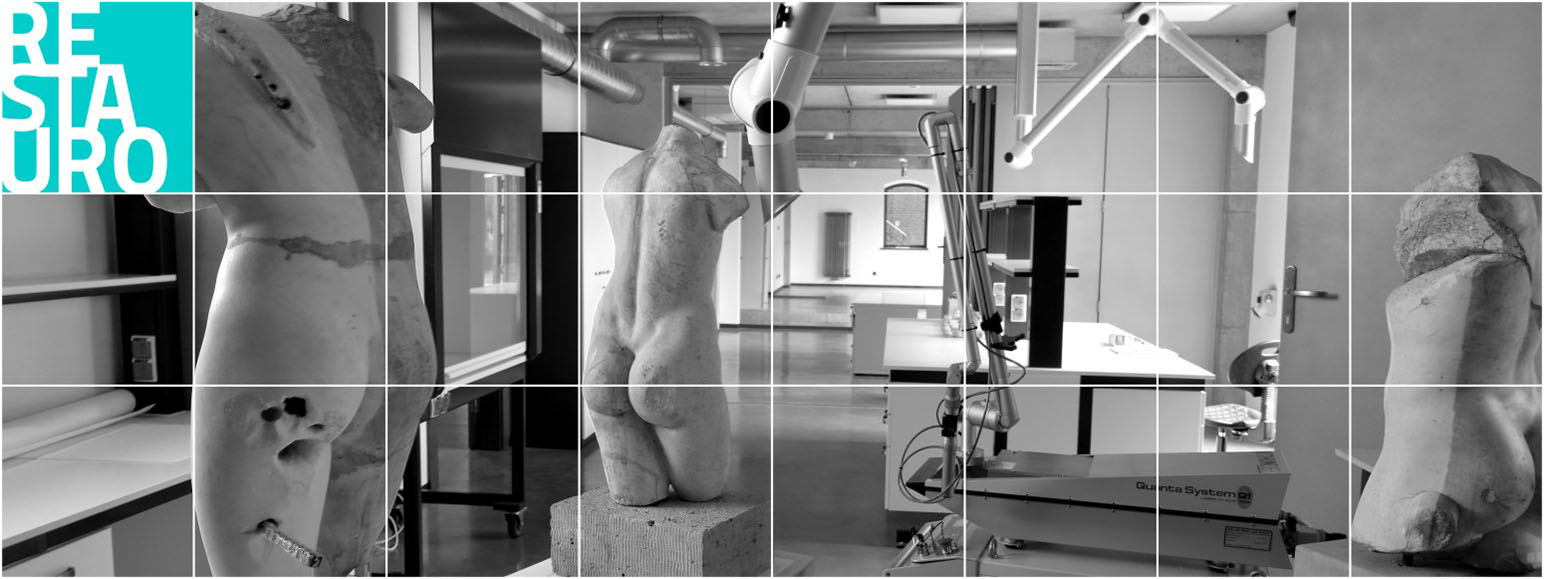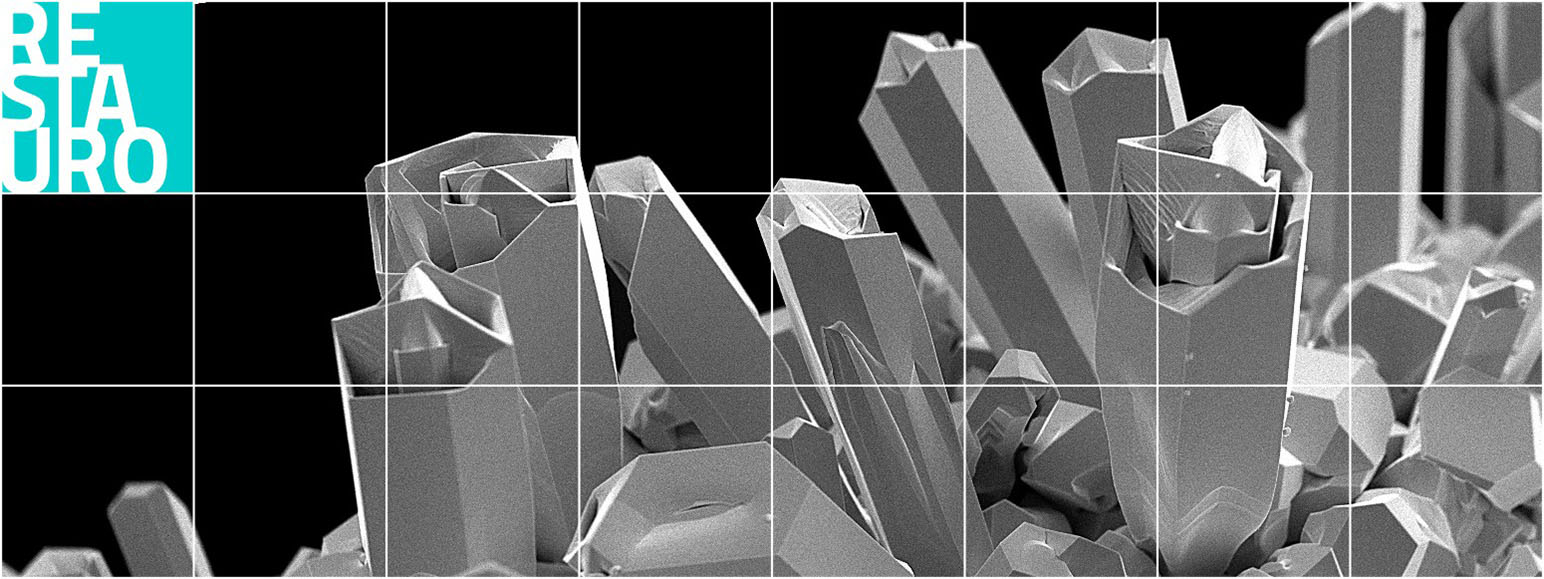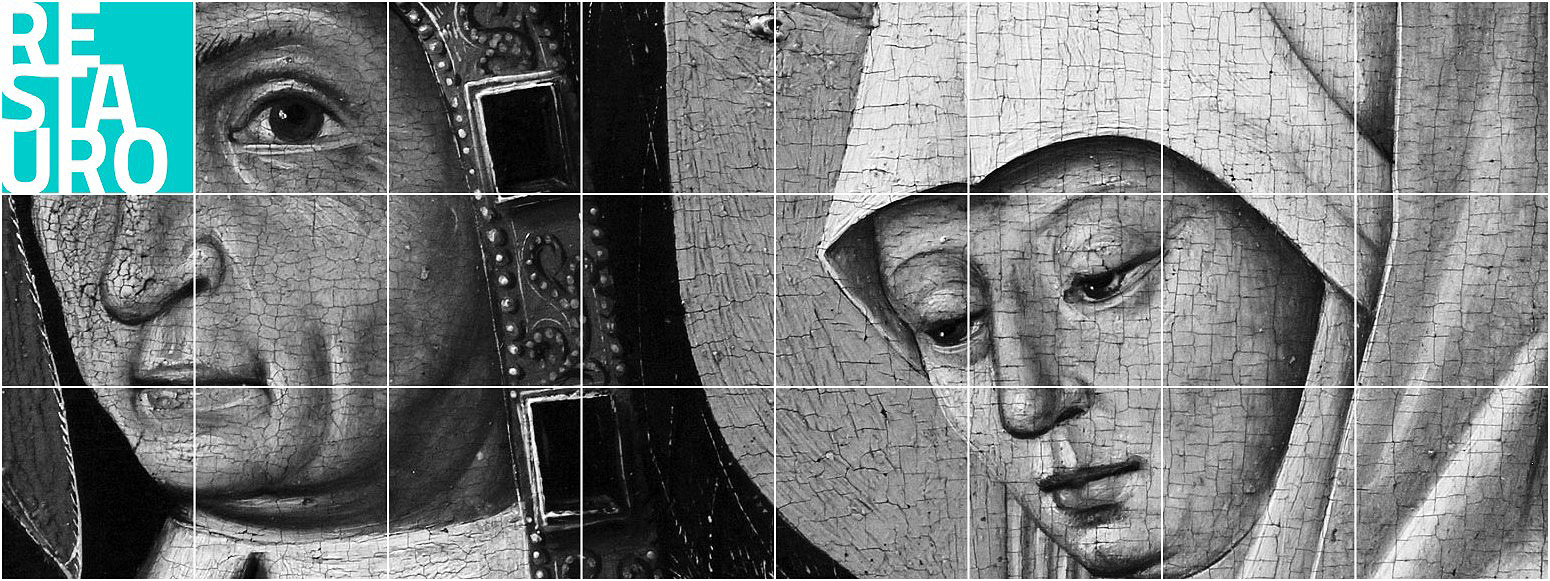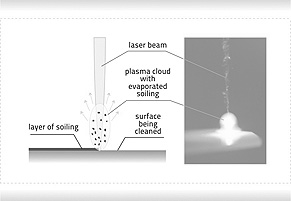Laser emitting equipment enables soiling and secondary deposits, e.g. corrosion products, paints, coatings, waxes, oils, etc., to be cleaned from historic surfaces.
What is laser
A laser system is a device that emits ultraviolet, visible or infrared electromagnetic radiation by means of stimulated emission. The word is an acronym standing for Light Amplification by Stimulated Emission of Radiation. Pulsed lasers allow large pulse energy build-up and very short pulse duration.
How lasers clean surfaces
Laser cleaning is based on the laser ablation phenomenon, which consists in evaporating material from a solid surface. The material sublimates, thus omitting the liquid phase and turning directly into gas or plasma.
Advantages
Cleaning historic surfaces by irradiating them with a laser beam is a method that can be characterized as:
- contactless, with little effect on the substrate being cleaned – the only cleaning medium is light
- selective – the beam "differentiates" between contaminants and the substrate
- local and precise – the beam with a properly configured energy density removes deposits only from the exact spot it is directed at
- versatile – it can be applied to a variety of substrates and contaminants, perfectly complementing traditional treatment methods (mechanical and chemical), wherever they prove ineffective
- environment friendly – no refuse, waste or dust is produced; no harmful substances are used; power supply is the only requirement.
Our equipment emits ultraviolet, visible or infrared electromagnetic radiation.

